ASTON UNIVERSITY ENGINEERING ACADEMY
Aston University Engineering Academy teaches design with an eye on future careers
education
Share this story
Summary
In Birmingham, England, the Aston University Engineering Academy collaborates with partner businesses to prepare students for careers that address local skills gaps. Instructor Andrew Hewitt teaches CAD product design and physical production on CNC fabrication machines from a single classroom. The single Fusion 360 platform takes students through the entire process allowing for rapid progress while they pursue both the national curriculum as well as personal projects.

The Aston University Engineering Academy in Birmingham, England is a specialty UTC secondary school preparing students for their next steps toward a career in engineering.
UTCs address skills gaps
In the UK, university technical colleges (UTCs) like Aston University Engineering Academy (AUEA) in Birmingham, England are transforming STEM-based education. A new style of secondary school established in 2010 for students aged 13-19, UTCs partner both with a sponsor university and with various local businesses, who advise and contribute to a UTC’s curriculum and pedagogy in order to help meet particular industry skill gaps. Aston University sponsors AUEA, which partners with many large engineering and science companies, such as Jaguar Land Rover, Boeing, and Rolls-Royce. Yet its small industry partners play just as important of a role.
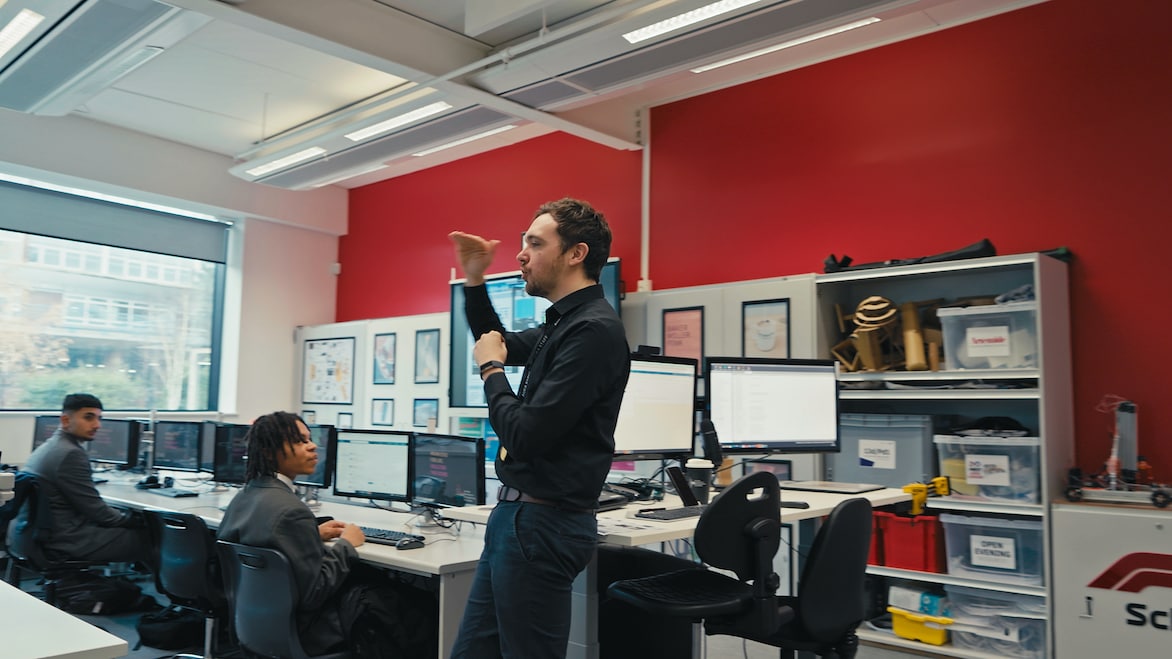
VIDEO: With Andrew Hewitt’s teaching style, classroom meets machine shop, and the national design and technology curriculum meets student passion projects.
Project-based design & manufacturing education
Institutions such as AUEA thrive on educators thinking and doing things differently, which perfectly suits Andrew Hewitt, AUEA’s Subject Lead of Design and Technology and an Autodesk Certified Instructor. His methodology does not separate computer desks and fabrication machines into different spaces. Rather, his hybrid classrooms combine CAD computer stations with manufacturing equipment, including 3D printers, a laser cutter, and CNC lathes and mills.
Each machine works with Autodesk Fusion 360 , and with this arrangement, Hewitt takes students on the full journey from design to manufacturing. Whether he’s teaching the national design & technology curricula, his own learning content, or working on internationally recognized competitions like F1 in Schools or the FIRST Tech Challenge, Hewitt favors project-based learning that shows students how changes to their designs affect downstream manufacturing processes.
Hands-on learning with expert help
Hewitt teaches every level of student at AUEA, and whether they join the institution as year 9 or year 12, they may have never used Fusion 360 before. That’s why he’s helped create their own in-house learning platform where they can follow tutorials tailored to their needs. “Independently, students can build resilience with this new software, understand the tools, and then I’m there as a physical help,” he says. “We've combined both my skills as a practitioner in the classroom with the online content.”
AUEA also encourages students to make use of the Autodesk Certification program, as well as to find projects and activities from content creators on YouTube or elsewhere. The curriculum calls for students to take at least two hours a week for projects of their choice. “The most important thing is how my students interact with the software,” Hewitt says, “and Fusion is just so easy to navigate quite complex tools. They really hit the ground running and end up creating quite extraordinary designs.”
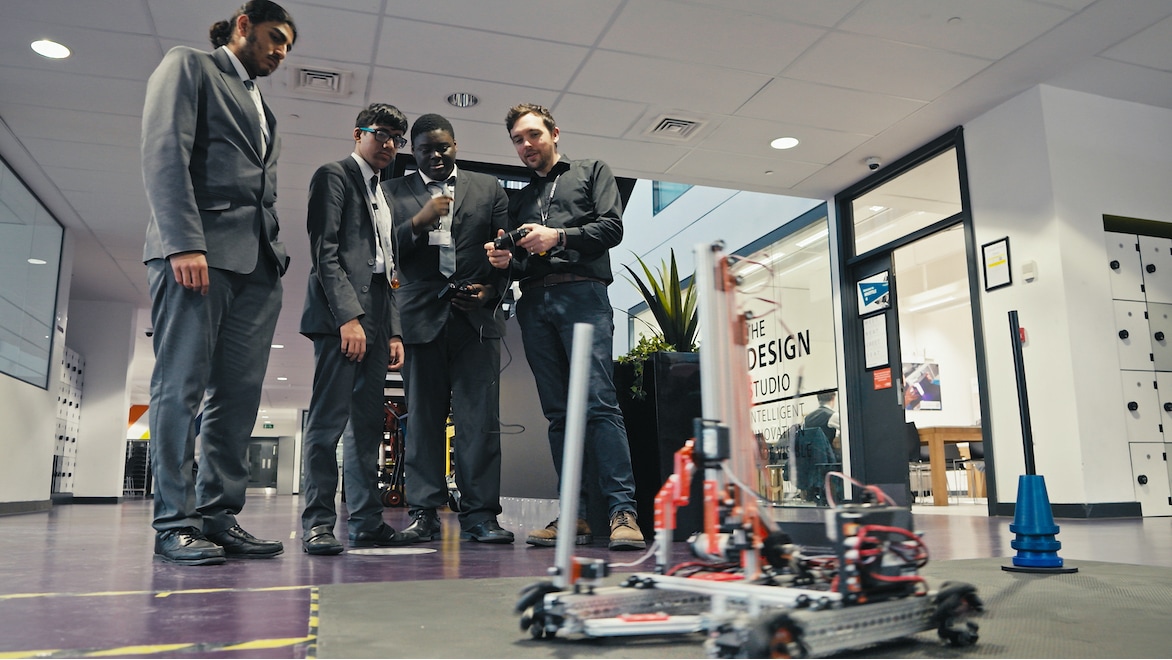
AUEA students are encouraged to participate in competitions such as the FIRST Tech Challenge robotics competition.
Advanced design challenges
For the students who want to push their skills as far as possible, AUEA is happy to oblige them. Hewitt leverages some of the advanced features within Fusion 360 such as nesting and AI-assisted generative design, where Hewitt says, “students can reimagine their ideas by understanding how different outside forces can affect the design of particular components.”
If that’s not enough, AUEA students can go all out and sign up for one of the international STEM-related competitions for which Hewitt regularly prepares students, such as F1 in Schools or the FIRST Tech Challenge robotics competition. “Students are given a modular set of robotic parts, and each year that robot has to perform different functions in an arena,” Hewitt says of the FIRST Tech Challenge. “Fusion 360 has allowed students to take those modular parts and redesign them where needed and then to fabricate those ideas whether by 3D printing or CNC milling.”
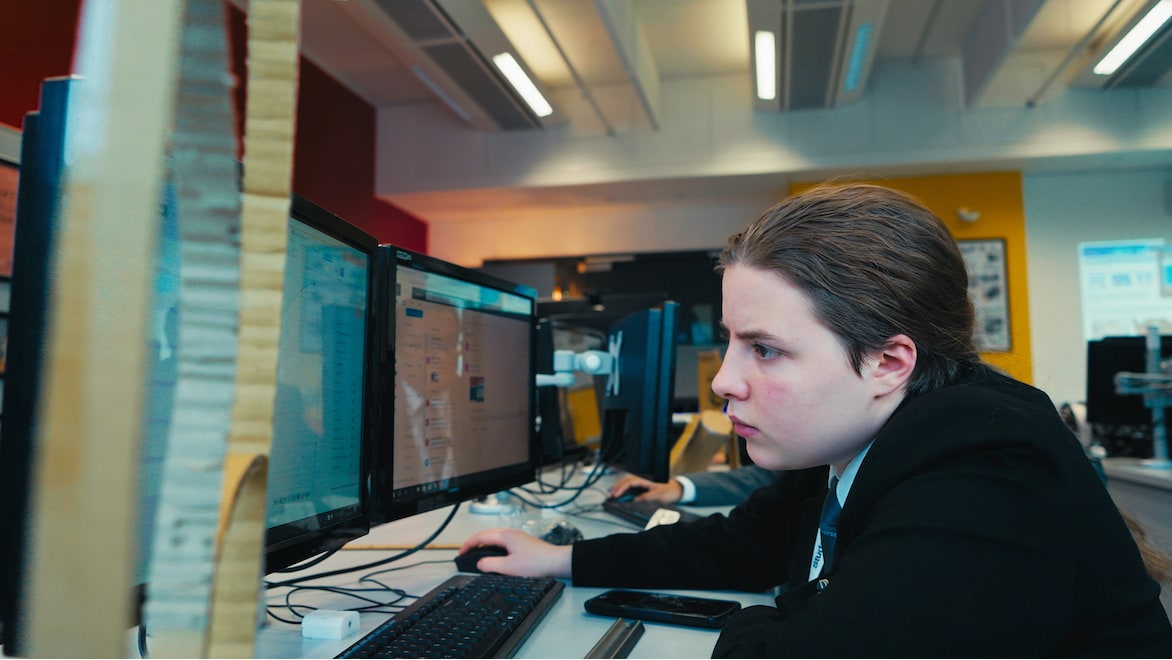
Alice Berril has a passion for the creative aspects of product design.
Fostering creativity
Alice Berril is an A-Level product design student at AUEA and has been using Fusion 360 for a few years, since her GCSE qualification. “If you'd told me then you can create models online, I'd have been skeptical,” she says. “I'd have thought it'd be really difficult, and you'd need lots of training, but it's not. It's quite simple.” Now she appreciates how Fusion 360 enhances her favorite aspects of product design—the creativity of sketching, modeling, and prototyping—and especially loves experimenting with how her 3D models look in different environments and lighting conditions within the software’s rendering component.
For part of her A-Level exam, Berril is working on sensory lighting that can help people with anxiety or sensory issues to focus or calm themselves. However, her personal projects have been fulfilling as well. For her favorite one, the school sought projects to help it be as sustainable as possible, so she designed a three-by-one meter compost bin with Fusion 360.
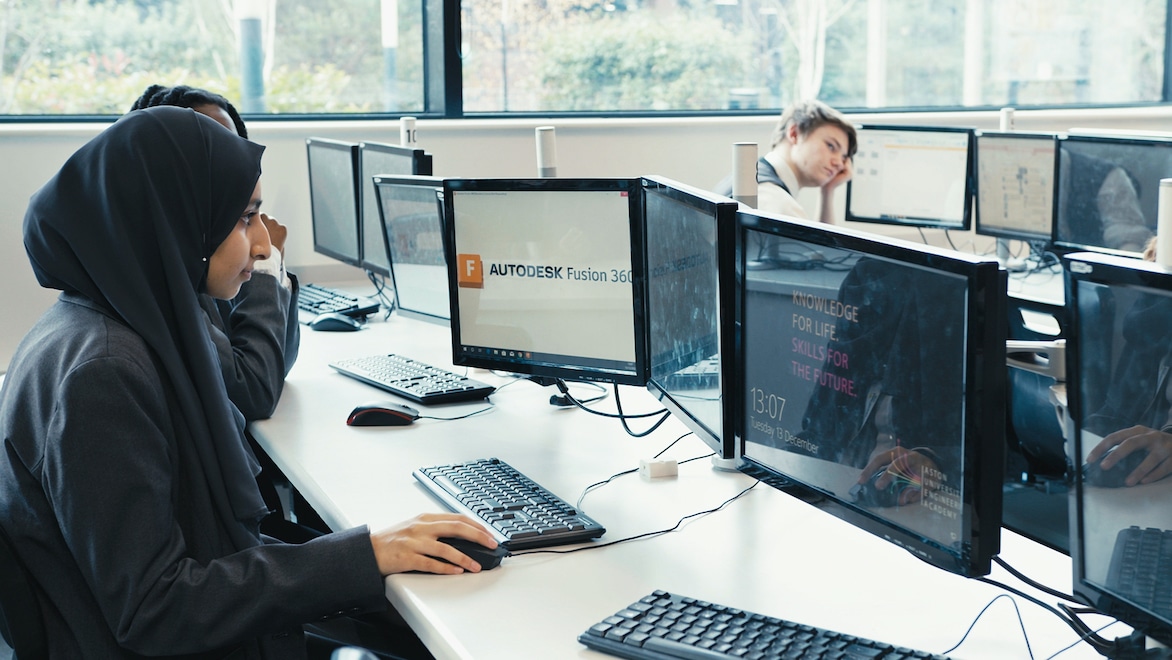
Students at AUEA take on projects that mimic the designer/client relationship.
Rapid progress
Student Leo Farrell first encountered Fusion 360 when he began at AUEA and has made great progress in his first year. “For the first three months I found the software slightly difficult, and then all of a sudden it just clicked,” he says, “and I raced through the assignments.”
One of those assignments was a lighting design for the school where the teacher was the client and conducted frequent client meetings with Farrell to provide preferences and feedback. Also, in addition to his coursework, Farrell loves to use Fusion 360 on his own time for his own projects, such as a working lock that he created after tearing apart other locks and measuring and analyzing the parts.
But for a career, Farrell is leaning toward jewelry design. He’s already created some ring designs and casting mold designs, for which his favorite Fusion 360 features are the rendering and simulation, because they give him a photorealistic view of a project, as well as a good idea of whether the fabrication will work before going through with 3D printing.
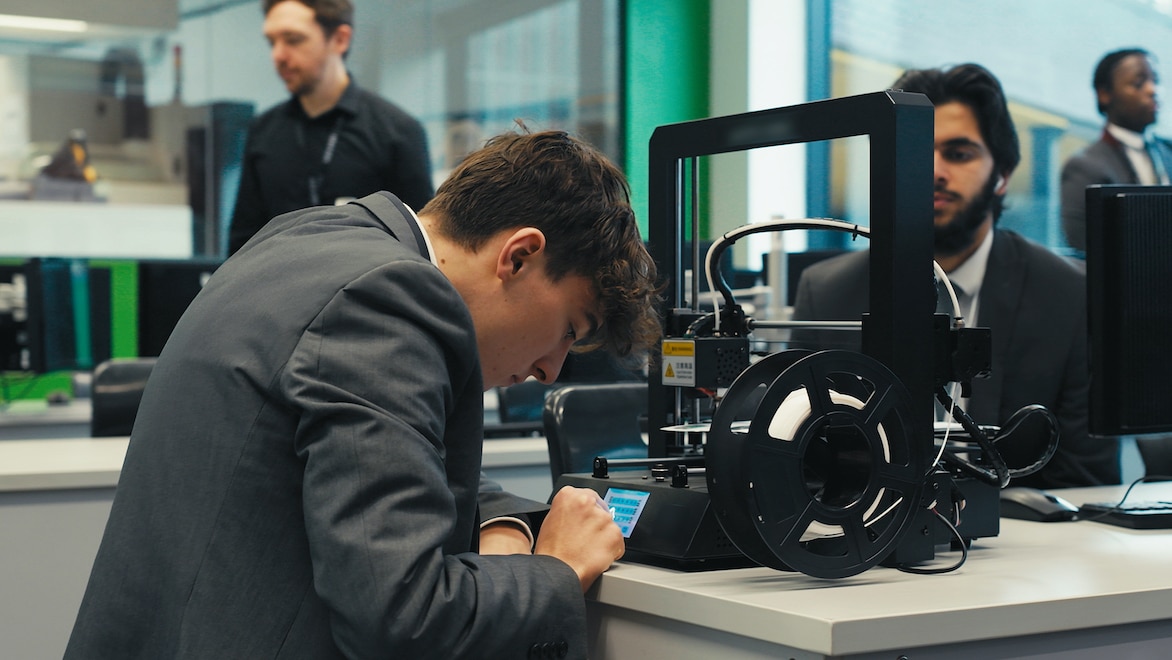
AUEA’s in-house learning content takes students from design to production on machines like 3D printers, all within Fusion 360 software.
Engineering education has never been better
During Hewitt’s career, he says he’s seen a rapid development in the technology available for design and manufacturing. When it comes to software, he says Fusion 360 encompasses three major advances: 1) the access that it gives people to professional CAD/CAM software on any device—even from a web browser, 2) unprecedented ease of use, and 3) more powerful capabilities than ever before.
“We've described Fusion 360 like a one-stop shop,” he says, “where a student can start the design process in Fusion and stay with the software all the way through until they've created a physical part.”
With as much as engineering technology has progressed recently, Hewitt’s well aware that it’s only continuing to progress. He and everyone else at AUEA are excited about incorporating new learning opportunities from technologies such as augmented reality and virtual reality and to leverage what they can do to prepare students for engineering careers.
“Product design and engineering is a passion of mine,” Hewitt says, “and being able to teach that to a room full of students is just something that I thoroughly enjoy.”
Get free educational access to Fusion 360 software, learning content, and other resources.
Watch on demand: Teaching for the Future
Andrew Hewitt joins a panel of professionals in engineering education to discuss how Fusion 360’s all-in-one platform is enhancing the educational experience for both teachers and students. Learn how it is being used to transform classrooms and programs into dynamic, innovative learning spaces.